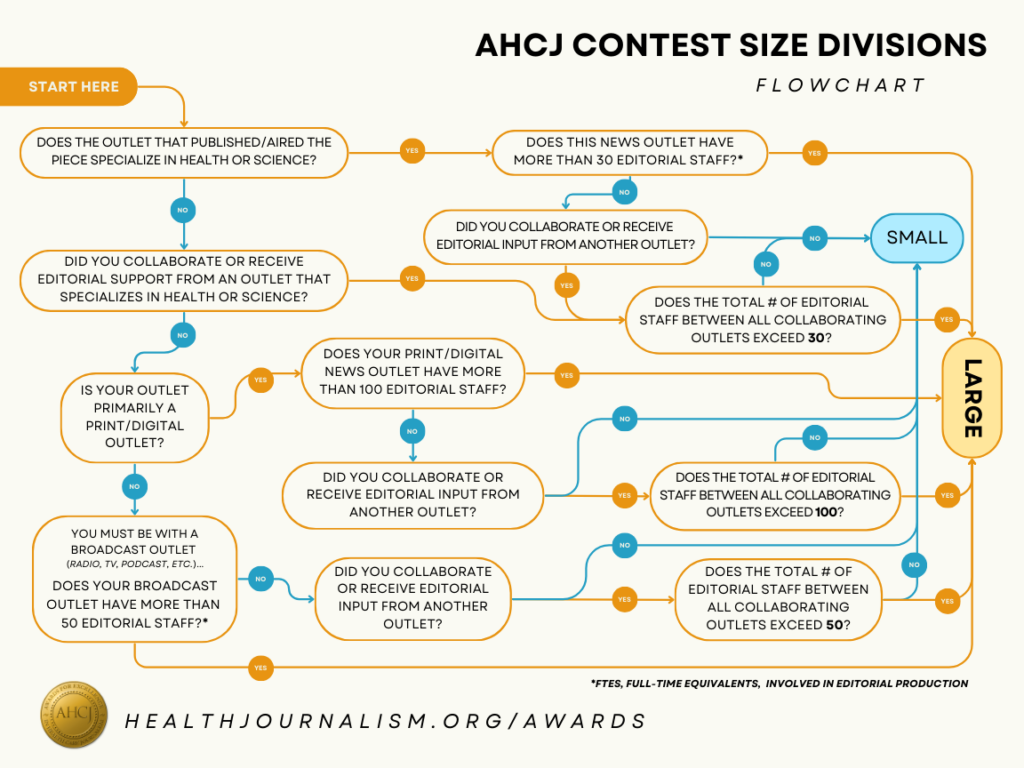
Awards for Excellence in Health Care Journalism
Since 2004, the Awards for Excellence in Health Care Journalism have recognized the best health reporting in print, broadcast, and online media. The contest was created by journalists for journalists and is not influenced or funded by commercial or special-interest groups. There are 14 categories. Most are topic-based, meaning entries compete head-to-head whether they appear in magazines, newspapers, online outlets or on radio or television stations.
For the 2023 Awards for Excellence in Health Care Journalism entries published or aired between Jan. 1 and Dec. 31, 2023 were accepted.
New for 2023.
We are rolling out big changes for the 2023 contest. Entries no longer require a PDF submission, outlets that specialize in health or science no longer automatically default into the Large division, and whether an entry qualifies for the Large or Small division is now determined by both outlet type and number of editorial staff. Detailed information about all the changes can be found on the Rules for Entry page.
The changes are informed by feedback we received from past AHCJ contest entrants, combined with information that members of the AHCJ contest committee gathered about how other journalism contests break down sizes.
“The media landscape is evolving, so the AHCJ contest must evolve as well. We’re hopeful that our updated definitions of Large and Small entries will create a more level playing field. We remain open to feedback on how to continue to improve the contest.”
Christine Herman
AHCJ Contest Chair and Freelance Editor
2023 Contest Entry Details
More About the Awards
Health journalism saves lives.
Everyone should have access to quality health care information so they can make informed decisions. Join AHCJ today for exclusive access to training and education to inform your community.
